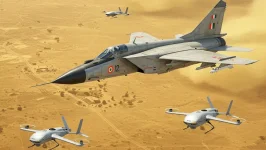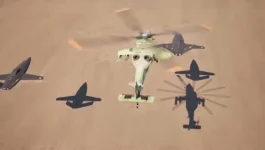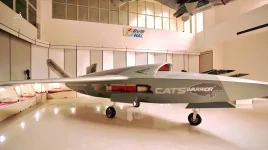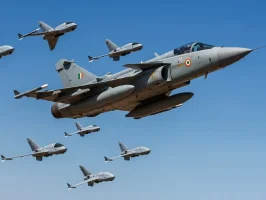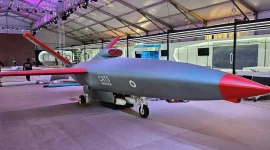- Views: 3K
- Replies: 6
Progress on India's futuristic Combat Air Teaming System (CATS) Warrior drone is accelerating, with state-owned Hindustan Aeronautics Limited (HAL) confirming the completion of critical engine integration tests.
In a recent update, HAL's leadership affirmed that the program is on schedule for the unmanned aerial vehicle's (UAV) maiden flight in 2027, marking a major step forward in the nation's indigenous military aviation capabilities.
HAL Chairman and Managing Director, DK Sunil, confirmed that a full-scale airframe of the CATS Warrior has been successfully fitted with an engine and has undergone ground runs. This essential phase validates the UAV's propulsion system, a foundational step before flight trials can commence.
In parallel, engineers are conducting crucial datalink checks to perfect the Manned-Unmanned Teaming (MUM-T) technology that will allow the drone to communicate and operate seamlessly with a manned fighter jet, such as the Tejas Light Combat Aircraft (LCA).
The development roadmap now focuses on the next critical stage. Throughout 2026, HAL will concentrate on refining the Warrior's flight control systems and aerodynamics.
This involves programming the complex software that will govern its flight and ensuring the drone's physical design provides the necessary stability and manoeuvrability for combat operations.
Successful completion of this phase is vital for meeting the scheduled first flight timeline in 2027.
The CATS Warrior is designed to function as a "loyal wingman," a concept rapidly gaining traction in modern air forces worldwide. This strategy involves teaming autonomous drones with manned fighter jets to enhance combat effectiveness and pilot safety.
The pilot of a "mothership," like the Tejas, will be able to command one or more Warrior drones to perform high-risk tasks such as penetrating heavily contested enemy air defences, launching precision strikes, or conducting real-time surveillance.
This approach aligns India with other global powers developing similar systems, such as the United States' XQ-58 Valkyrie and Australia's MQ-28 Ghost Bat.
As a force multiplier, the CATS Warrior will significantly enhance the operational flexibility and survivability of the Indian Air Force (IAF). The drone is being designed to carry an array of sensors, electronic warfare equipment, and precision-guided munitions.
Its ability to operate in dangerous environments reduces the risk to human pilots, allowing the IAF to project power more effectively.
This ambitious project is a cornerstone of India's Atmanirbhar Bharat policy, aiming to build sovereign capability in critical defence technologies.

